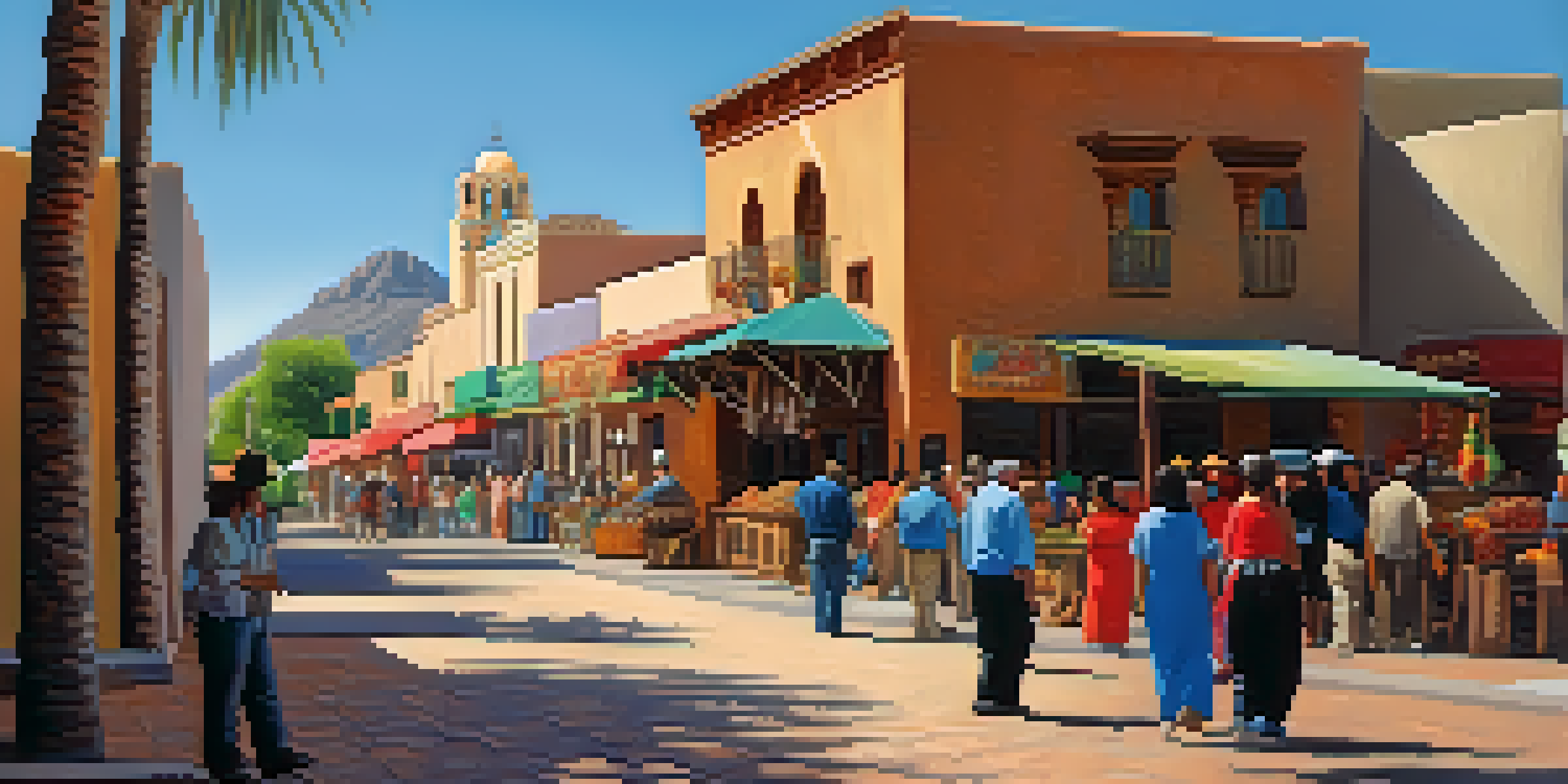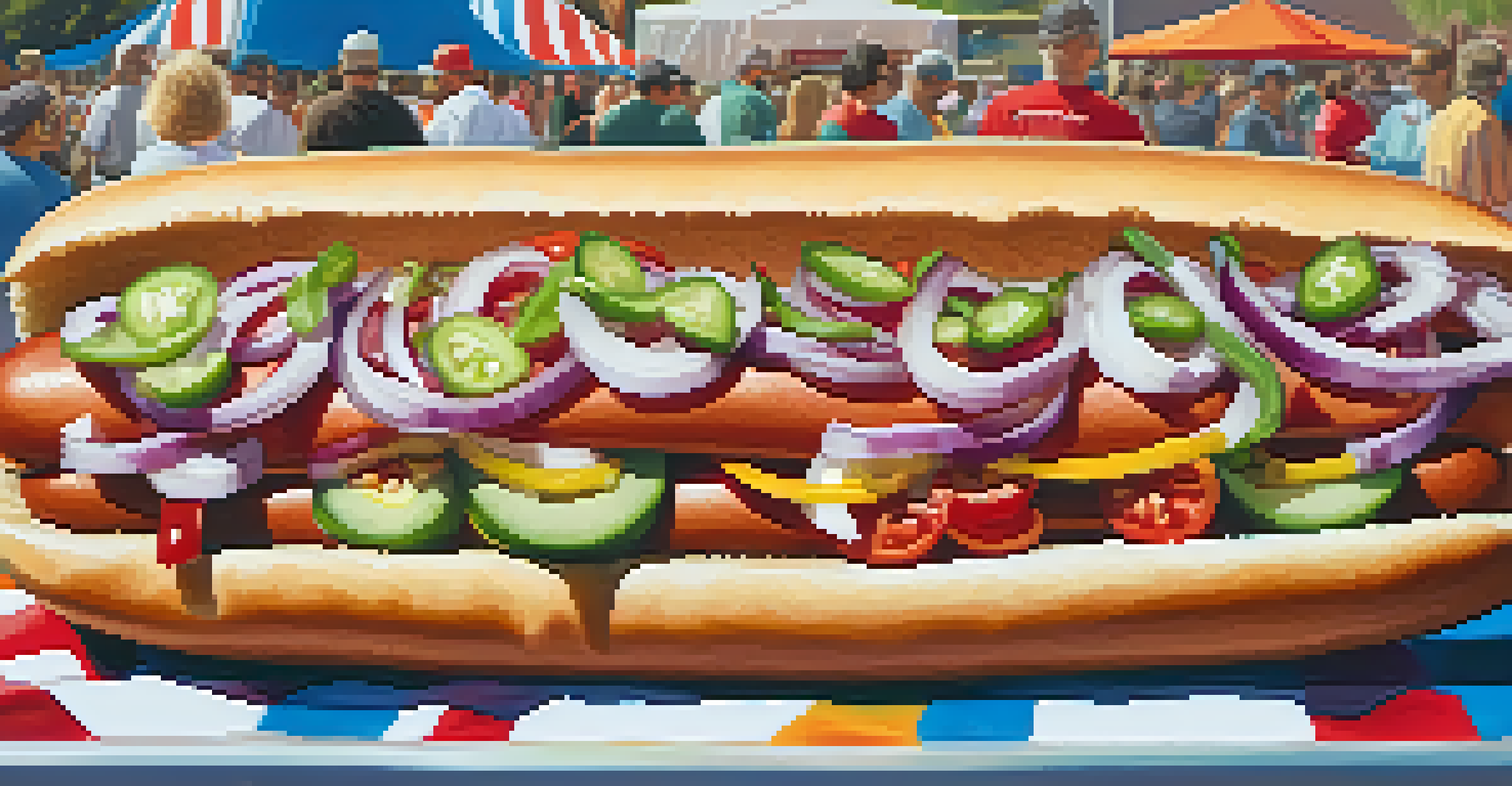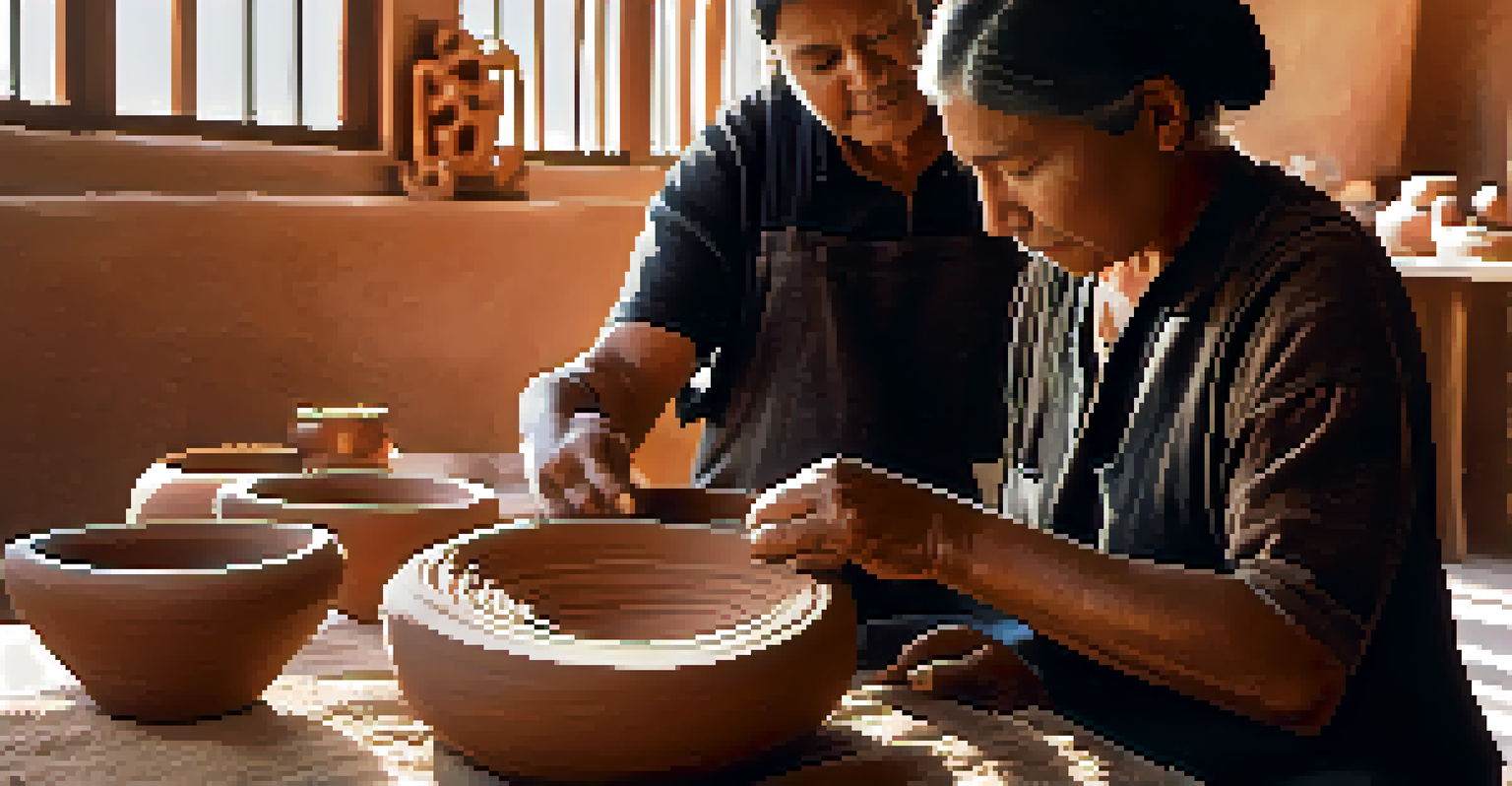Cultural Impact of Tucson's Early Settlers: A Historical Overview

The Arrival of Indigenous Peoples in Tucson
Long before European settlers arrived, Tucson was home to various Indigenous groups, including the Hohokam, Tohono O'odham, and Apache tribes. Each of these communities contributed to the rich cultural tapestry of the region, establishing trade routes and agricultural practices that thrived in the arid climate. The Hohokam, for instance, are renowned for their sophisticated irrigation systems, which transformed the desert into fertile land.
The past is never dead. It's not even past.
These early inhabitants not only adapted to their environment but also laid the groundwork for Tucson's future cultural practices. Their art, language, and traditions have been passed down through generations, creating a cultural legacy that continues to influence the area today. For example, traditional crafts such as pottery and basket weaving are still practiced and celebrated in modern Tucson.
The Indigenous peoples' connection to the land and their community-oriented lifestyles fostered a sense of identity that persists in Tucson's cultural landscape. Understanding their contributions provides valuable insight into the region's history and the foundational role these communities played in shaping Tucson's identity.
Spanish Colonization and Its Cultural Influence
In the late 17th century, Spanish explorers and missionaries arrived in Tucson, marking a significant shift in the area's cultural landscape. The establishment of missions aimed at converting Indigenous populations introduced new religious practices, architectural styles, and agricultural techniques. For instance, the San Agustín Mission, founded in 1776, became a cornerstone for the community and a symbol of Spanish influence.

The fusion of Spanish and Indigenous cultures gave rise to unique traditions, including the blending of languages and culinary practices. Dishes that are now staples in Tucson, such as tamales and enchiladas, reflect this rich culinary heritage. Additionally, the Spanish language has become a vital part of Tucson’s identity, with many residents speaking both English and Spanish.
Tucson's Rich Indigenous Heritage
Tucson's cultural identity is deeply rooted in the contributions of Indigenous peoples, who established agricultural practices and traditions that continue to influence the region today.
This period also saw the introduction of various European customs, which were adapted to fit the local context. Festivals, music, and dance traditions emerged from this cultural intermingling, enriching Tucson's vibrant community spirit and paving the way for the diverse city we see today.
The Influence of Mexican Culture in Tucson
Following Mexico's independence from Spain in the early 19th century, Tucson became part of Mexican territory, further deepening its cultural roots. The Mexican community contributed significantly to the social fabric of Tucson, bringing with them traditions, festivals, and a strong sense of family and community. Events like Día de los Muertos and Cinco de Mayo are celebrated with enthusiasm, showcasing the importance of these cultural practices.
Culture is the widening of the mind and of the spirit.
The Mexican influence is also evident in Tucson's music and dance, with styles like mariachi and folklórico becoming integral to local celebrations. These art forms not only entertain but also serve as a means of preserving and sharing cultural heritage. Local schools often incorporate these traditions, ensuring that younger generations remain connected to their roots.
Moreover, the Mexican-American community has played a pivotal role in shaping Tucson's identity, advocating for civil rights and cultural recognition. Their contributions to the arts, politics, and education reflect a vibrant community that continues to thrive and evolve within the larger Tucson narrative.
The American Frontier and Tucson's Growth
The mid-19th century brought significant changes as Tucson became part of the United States following the Gadsden Purchase in 1854. This marked the beginning of a new era, as American settlers arrived, bringing different cultural influences and economic opportunities. The establishment of the railroad in the late 1800s further accelerated Tucson's growth, transforming it into a bustling trade hub.
As American settlers began to inhabit the area, they introduced new agricultural practices, technologies, and social norms. The influence of Western culture can be seen in the architecture of the time, with structures like the Pima County Courthouse showcasing a blend of styles that reflect Tucson's diverse heritage. This period also saw the rise of local governance and community organizations.
Cultural Fusion from Spanish Influence
The arrival of Spanish settlers introduced new religious practices and culinary traditions, resulting in a unique blend that shapes Tucson's cultural landscape.
However, this growth did not come without challenges, as conflicts arose between Indigenous peoples, Mexican residents, and new settlers. These tensions shaped the region's socio-economic landscape, leading to a complex interplay of cultures that has defined Tucson's evolution. Today, the remnants of this period can be seen in the city’s eclectic neighborhoods and community events.
Tucson’s Cultural Renaissance in the 20th Century
The 20th century marked a cultural renaissance in Tucson, as the city began to embrace its diverse heritage more openly. This period saw the establishment of cultural institutions, such as the Tucson Museum of Art and the Arizona-Sonora Desert Museum, which celebrate the region's history and natural beauty. These institutions not only preserve artifacts but also provide educational programs that foster a deeper understanding of Tucson's cultural landscape.
Moreover, the arts scene flourished, with local artists and musicians drawing inspiration from Tucson's rich history. Festivals, such as the Tucson Folk Festival and the All Souls Procession, became platforms for community expression, showcasing the talents and traditions of various cultural groups. This vibrant artistic movement has solidified Tucson's reputation as a cultural destination.
As Tucson continued to grow, it became a melting pot of cultures, influenced by waves of immigration from Latin America and beyond. This influx has enriched the community, introducing new languages, culinary delights, and cultural practices. Today's Tucson is a testament to this dynamic cultural exchange, reflecting a proud legacy of diversity.
The Role of Education in Cultural Preservation
Education has played a crucial role in preserving Tucson's cultural heritage. Local schools and universities have developed programs that focus on Indigenous studies, Mexican-American history, and the arts, ensuring that future generations remain connected to their roots. By incorporating these subjects into the curriculum, educators aim to foster a sense of pride and understanding among students.
Community organizations also contribute to this effort, offering workshops, classes, and events that celebrate local traditions. For instance, programs teaching traditional crafts, music, and dance help bridge the gap between generations, allowing elders to pass down their knowledge to the youth. Such initiatives strengthen community bonds and cultivate an appreciation for Tucson's diverse cultural landscape.
Modern Tucson: A Cultural Melting Pot
Today, Tucson thrives as a vibrant city that celebrates its diverse heritage, with ongoing efforts in education and community engagement to preserve its rich cultural tapestry.
Moreover, cultural festivals and events often include educational components, allowing attendees to learn about different traditions and histories. These gatherings not only entertain but also serve as vital opportunities for cultural exchange and dialogue. In this way, education becomes a powerful tool for preserving Tucson's rich heritage while promoting understanding among its diverse population.
Tucson Today: A Tapestry of Cultures
Today, Tucson is a vibrant city that proudly showcases its cultural diversity. The influences of Indigenous, Spanish, Mexican, and American cultures are woven into the fabric of everyday life, from the architecture to the food and festivals. This rich cultural tapestry attracts visitors and residents alike, highlighting Tucson as a unique destination that honors its past while embracing the future.
Local cuisine reflects this cultural blend, with restaurants offering everything from traditional Sonoran hot dogs to contemporary takes on classic dishes. Food festivals celebrate this culinary diversity, creating an opportunity for people to come together and appreciate the flavors that define Tucson. Each meal tells a story, connecting diners to the city's history and its multicultural roots.

As Tucson continues to evolve, its commitment to cultural preservation remains strong. Residents actively participate in community events, arts initiatives, and educational programs, ensuring that the legacy of early settlers and their descendants lives on. This dedication to honoring the past while welcoming new influences exemplifies the spirit of Tucson—a city that thrives on the richness of its cultural heritage.